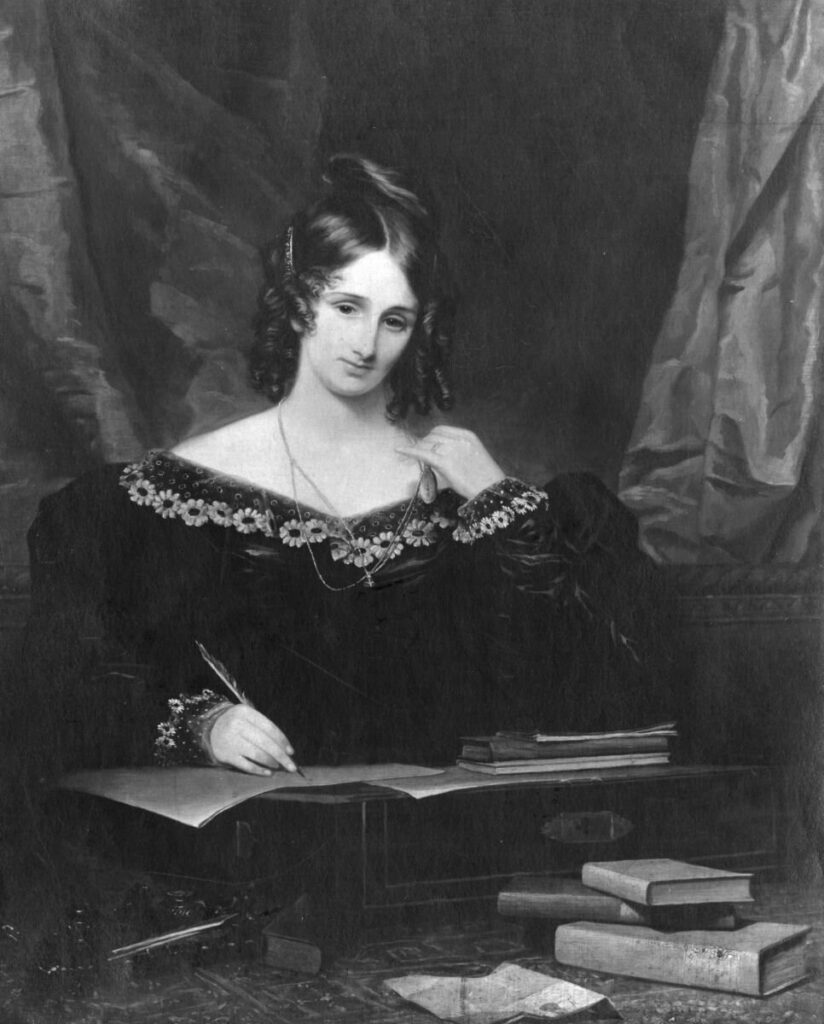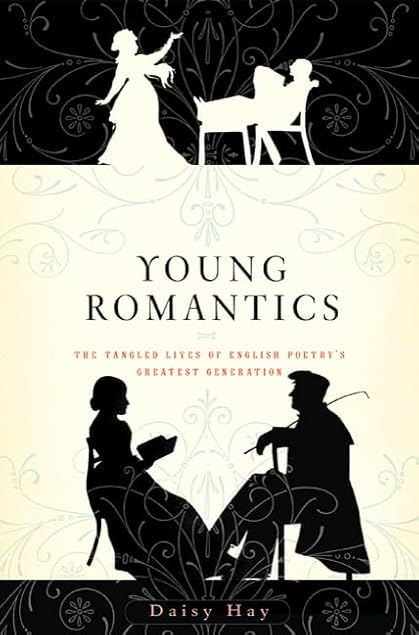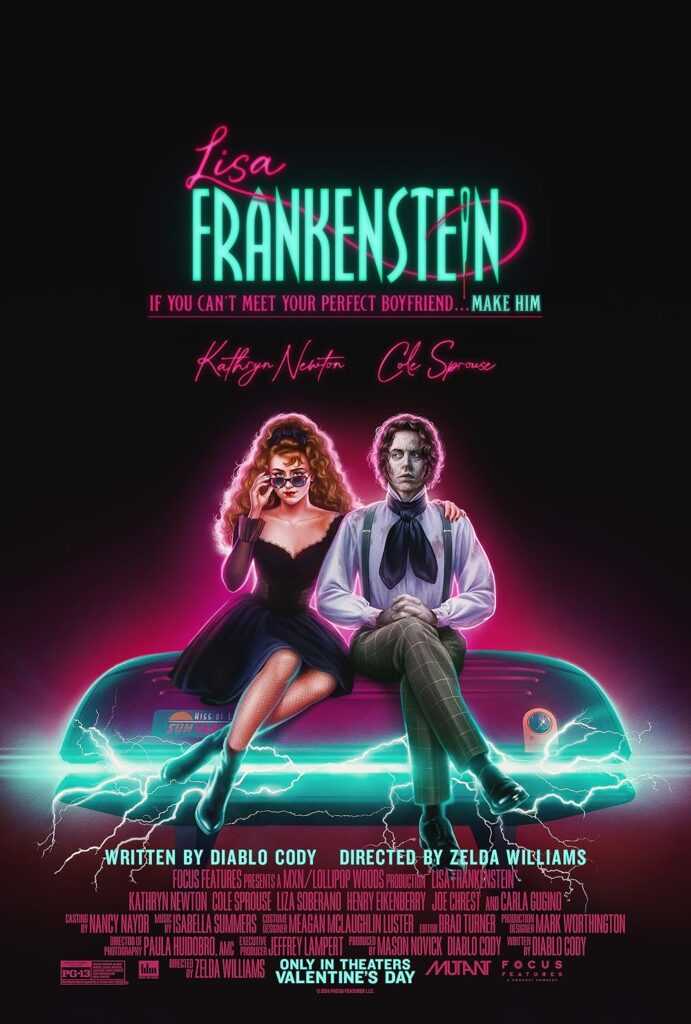August 30 is Frankenstein Day, celebrating the birthday of author Mary Shelley. Frankenstein: or, the Modern Prometheus, is an 1818 novel that tells the story of Victor Frankenstein, a young scientist who creates a sapient creature in an unorthodox scientific experiment that involves putting it together with different body parts. Frankenstein is one of the very first science fiction novels. It’s a classic monster story with many retellings both in books and on screen.

Mary Wollstonecraft Shelley (born Mary Godwin, August 30, 1797 – February 1, 1851) was an English writer best known for her Gothic novel Frankenstein. It’s often seen as one of the first science fiction books ever written. She also helped edit and promote the poetry of her husband, Percy Bysshe Shelley, a famous Romantic poet and thinker.
Mary’s parents were well-known intellectuals—her father, William Godwin, was a political philosopher, and her mother, Mary Wollstonecraft, was a writer and early women’s rights advocate. Tragically, Mary’s mother died just 11 days after she was born. Her father raised her and gave her a strong, though informal, education.
At 16, Mary fell in love with Percy Shelley, one of her father’s followers—though Percy was already married. In 1814, Mary, Percy, and her stepsister Claire Clairmont traveled through France and Europe together. When they returned to England, Mary was pregnant. Over the next couple of years, the couple faced financial problems, social criticism, and the loss of their first baby. After Percy’s wife, Harriet, died in 1816, Mary and Percy married.
That same year, they famously spent a summer in Switzerland with Lord Byron and writer John William Polidori. It was during this trip that Mary got the idea for Frankenstein.
The Shelleys moved to Italy in 1818, but tragedy continued to follow them—two more children died young. Only one son, Percy Florence Shelley, survived to adulthood. In 1822, Percy drowned when his boat sank in a storm.
Mary returned to England a year later. She spent the rest of her life raising her son and writing professionally. In her final decade, she suffered from illness, likely caused by a brain tumor, and she died in 1851 at the age of 53.
You can learn more about Mary, Percy, Lord Byron, and William Polidori in Young Romantics: the Tangled Lives of English Poetry’s Greatest Generation by Daisy Hay.

Not only is Frankenstein an iconic book; it has also been made into dozens of movies.
The first movie version of Mary Shelley’s Frankenstein was released in 1910. It was a silent film created by Thomas Edison’s company and directed by J. Searle Dawley. The film was just one reel long and didn’t focus much on the horror. Instead, it explored the story’s mysterious and psychological themes.
One of the most well-known movie versions was created in 1931 and stars Boris Karloff. Frankenstein features Colin Clive as Henry Frankenstein (Victor Frankenstein in the novel), an obsessed scientist who digs up corpses with his assistant in order to assemble a living being from body parts. The resulting creature is often known as Frankenstein’s monster,
The newest adaptation will be released in 2025. It stars Oscar Issac as Viktor Frankenstein and features Jacob Elordi and Christoph Waltz. It is directed by Guillermo Del Toro.
There are also several movies inspired by Frankenstein, including Young Frankenstein and Lisa Frankenstein.
Released in 1974, Young Frankenstein is a comedy-horror film directed by Mel Brooks. The screenplay was written by Brooks and Gene Wilder, with Wilder also starring as the main character—a descendant of the famous Victor Frankenstein. Peter Boyle played the monster, and the film featured a star-studded cast including Teri Garr, Cloris Leachman, Marty Feldman, Madeline Kahn, Kenneth Mars, Richard Haydn, and Gene Hackman. It is a hilarious and clever parody of the classic Frankenstein movies. Gene Wilder stars as Dr. Frederick Frankenstein (pronounced Frank-en-SCHTEEN), a descendant of the infamous Victor Frankenstein, who travels to Transylvania to reclaim his family’s reputation. Once there, he discovers a dusty old manual written by his late grandfather, explaining in exact detail how to bring a dead body back to life.
With the help of his eccentric hunchbacked assistant, Igor, and the sweet and spirited lab assistant, Inga, Dr. Frankenstein sets out to perform the experiment. Together, they assemble a creature from body parts, hoping to succeed where his grandfather did. But instead of being a terrifying monster, the creature turns out to be gentle, misunderstood, and longing for love and companionship.

Lisa Frankenstein takes place in 1989 and follows Lisa Swallows, a teen still grieving her mother’s death two years earlier.
At a party, Lisa has a rough night—she gets accidentally drugged, harassed by her lab partner Doug, and later visits the grave of a pianist she often talks to. The pianist, who died in 1837 after being struck by lightning, is suddenly brought back to life when lightning strikes his grave again.
The zombie, called “The Creature,” sneaks into Lisa’s house. At first, Lisa is scared, but soon she feels sorry for him and hides him from her family.
Are you someone who loves everything that’s creepy? Join us October 24 at 6:30 pm for an after-hours program about the history and music of Samhein and Halloween.
Need help finding your next scary read or monster movie? Contact the reference desk at [email protected].

